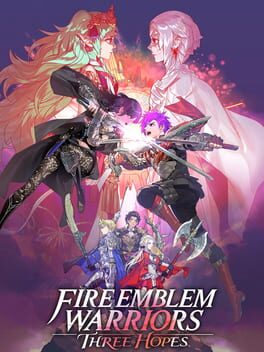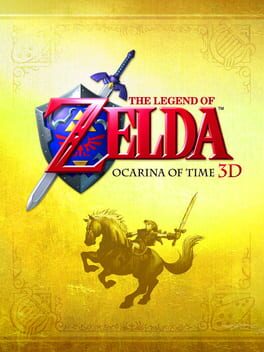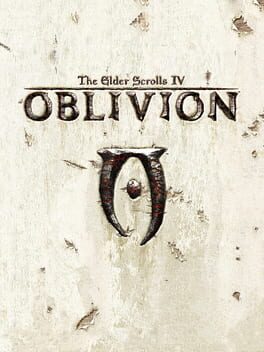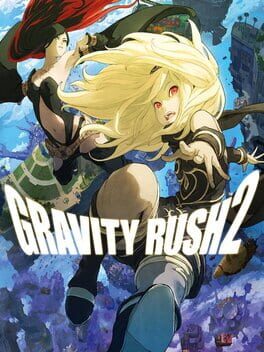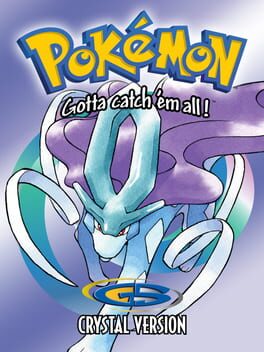Stephen_Hilger
2007
Persona 3 FES is a tough game to recommend. The combat is unforgiving, the plot has a pretty slow start, and it's fairly easy to completely prevent progress in the game by saving too close to a boss you didn't grind enough for. Big Persona fans will admire this game for setting the modern foundation and for its stylish presentation and incredible soundtrack. But for many, the admiration will stop there. At least, this is how I felt about P3 until finally finishing the game earlier this year.
This game really comes together in its finale, which is fitting for a game entirely about death and the end of things. While Persona 4 and 5 have similar plot structure, both of those games play out more like seasons of a TV show. P3 is a much more singular experience, and I found the game's ending left a far larger impact on me than I expected.
The Death card in Tarot (something all Persona games pull heavily from) is symbolically more about change than specifically death itself, and Persona 3 seems to know this. No one character in this game is the same person by the plot's conclusion. We see their arcs play out in both cutscenes and in combat, as well as their dialogue in battle and the way they greet us when we return to the dormitory -- our de facto home.
I won't spoil the ending of this game, but it's maybe one of the most beautiful things I've seen in a video game. P3 doesn't have the gall to say what the meaning of life is, but it makes a case that our legacy is composed of seemingly innocuous moments shared with others. People we have heard and helped -- even if we didn't realize that's what we were doing. It is these moments that have meaning -- even if they're only for a little while.
This game really comes together in its finale, which is fitting for a game entirely about death and the end of things. While Persona 4 and 5 have similar plot structure, both of those games play out more like seasons of a TV show. P3 is a much more singular experience, and I found the game's ending left a far larger impact on me than I expected.
The Death card in Tarot (something all Persona games pull heavily from) is symbolically more about change than specifically death itself, and Persona 3 seems to know this. No one character in this game is the same person by the plot's conclusion. We see their arcs play out in both cutscenes and in combat, as well as their dialogue in battle and the way they greet us when we return to the dormitory -- our de facto home.
I won't spoil the ending of this game, but it's maybe one of the most beautiful things I've seen in a video game. P3 doesn't have the gall to say what the meaning of life is, but it makes a case that our legacy is composed of seemingly innocuous moments shared with others. People we have heard and helped -- even if we didn't realize that's what we were doing. It is these moments that have meaning -- even if they're only for a little while.
This game exceeded my expectations in pretty much every way.
Narratively, I don't think it will carry much weight if you don't have a strong attachment to the cast of Three Houses. But if you are a big fan of FE3H (as I am), it's a blast to see these characters again.
The main plot is kind of a mess. I played Golden Deer and, without spoiling, there are some really cool ideas explored in this "what if?" storyline but none of them really come together. And while I appreciate Three Hopes not wanting to retread established plot beats of Three Houses -- the pacing is SO fast we don't get appropriate buildup or context for many moments. This didn't stop me from enjoying the Golden Deer navigating a new scenario, but I think this story could've been just as powerful as Three Houses with another draft or two.
Mechanically, this is the most I've enjoyed the Musou genre. Like P5 Strikers, this feels more like a collaboration than just a Warriors game with Fire Emblem characters. While it plays somewhat traditionally, giving units orders scratches the tactics itch. And because every character plays so uniquely, combat rarely gets old.
The camp (Three Hopes' Monastery equivalent) is a blast to revisit, and the loop of doing missions to further upgrade the camp is the main pull of the game. There are also a lot of QoL and UI improvements in Three Hopes that I would love to see folded into the mainline series.
Overall, this game is a clever way to give Three Houses a sequel. There are a lot of cool ideas explored in the plot, and some great support scenes between characters who didn't have them in Three Houses. Mechanically, it feels like a fresh take on a very familiar genre, and also introduces ideas that I think FE as a series can benefit from.
This game may be tailor-made for fans, but as a big fan of this series, it's fun to indulge.
Narratively, I don't think it will carry much weight if you don't have a strong attachment to the cast of Three Houses. But if you are a big fan of FE3H (as I am), it's a blast to see these characters again.
The main plot is kind of a mess. I played Golden Deer and, without spoiling, there are some really cool ideas explored in this "what if?" storyline but none of them really come together. And while I appreciate Three Hopes not wanting to retread established plot beats of Three Houses -- the pacing is SO fast we don't get appropriate buildup or context for many moments. This didn't stop me from enjoying the Golden Deer navigating a new scenario, but I think this story could've been just as powerful as Three Houses with another draft or two.
Mechanically, this is the most I've enjoyed the Musou genre. Like P5 Strikers, this feels more like a collaboration than just a Warriors game with Fire Emblem characters. While it plays somewhat traditionally, giving units orders scratches the tactics itch. And because every character plays so uniquely, combat rarely gets old.
The camp (Three Hopes' Monastery equivalent) is a blast to revisit, and the loop of doing missions to further upgrade the camp is the main pull of the game. There are also a lot of QoL and UI improvements in Three Hopes that I would love to see folded into the mainline series.
Overall, this game is a clever way to give Three Houses a sequel. There are a lot of cool ideas explored in the plot, and some great support scenes between characters who didn't have them in Three Houses. Mechanically, it feels like a fresh take on a very familiar genre, and also introduces ideas that I think FE as a series can benefit from.
This game may be tailor-made for fans, but as a big fan of this series, it's fun to indulge.
Like the Bluepoint remake of Shadow of the Colossus, Ocarina of Time 3D is the type of remake that is mostly interested in preserving the original work. There is an extremely delicate balance between upgrading the visuals and preserving the charm of the N64 classic, and this game strikes that middle ground perfectly. As someone who plays Ocarina of Time annually, I feel pretty strongly this 3DS remake is the best way to play the game-- especially if it's your first time.
2017
Gravity Rush 2 is a game that absolutely shouldn't work (and often doesn't work) but is carried and propelled by a great lead, an immersive world, and a thrilling central mechanic.
Our hero, Kat, has a superpower that controls the direction gravity pulls her. Essentially, she can fly by falling. It's an abstract concept that takes some getting used to, but it quickly becomes the selling point of the game and remains one of my favorite traversal mechanics.
A big reason for the "flight" mechanic's success is the verticality of the world. The main city in the sky is divided into three main areas, and it takes a serious amount of time to get around. The upper islands where the ultra-rich live are through layers and layers of clouds, and the lower decks (where most people live) can only be visited by falling from tremendous heights. This might sound like an issue, but it's always a joy to fly around, and the distance between places adds a lot of feeling and meaning to the world itself.
The best plot beats require Kat to travel around great distances with a pressing goal. An apt comparison would be the urgency Peter Parker feels in Marvel's Spider-Man when he's tasked with traveling across Manhattan to save someone, only to be immediately called elsewhere. Kat shares Peter's routine of helping everyone they meet, which leads to plenty of high stakes battles and events, but also lower stakes moments like delivering newspapers or helping a family reunite.
I adore the more grounded scenes of the game's story because those moments allow the characters and the setting to shine. Without spoiling: I will say the main plot begins wonderfully and ends completely off the rails, which is a bit disappointing. But that being said, even the story's weaker moments didn't undo the more successful ones.
Playing this game is also bittersweet because it seems very unlikely we'll ever see Gravity Rush 3. But whether or not that day ever comes, this game remains a hidden gem that is routinely on sale for less than $20. Give it a shot!
Our hero, Kat, has a superpower that controls the direction gravity pulls her. Essentially, she can fly by falling. It's an abstract concept that takes some getting used to, but it quickly becomes the selling point of the game and remains one of my favorite traversal mechanics.
A big reason for the "flight" mechanic's success is the verticality of the world. The main city in the sky is divided into three main areas, and it takes a serious amount of time to get around. The upper islands where the ultra-rich live are through layers and layers of clouds, and the lower decks (where most people live) can only be visited by falling from tremendous heights. This might sound like an issue, but it's always a joy to fly around, and the distance between places adds a lot of feeling and meaning to the world itself.
The best plot beats require Kat to travel around great distances with a pressing goal. An apt comparison would be the urgency Peter Parker feels in Marvel's Spider-Man when he's tasked with traveling across Manhattan to save someone, only to be immediately called elsewhere. Kat shares Peter's routine of helping everyone they meet, which leads to plenty of high stakes battles and events, but also lower stakes moments like delivering newspapers or helping a family reunite.
I adore the more grounded scenes of the game's story because those moments allow the characters and the setting to shine. Without spoiling: I will say the main plot begins wonderfully and ends completely off the rails, which is a bit disappointing. But that being said, even the story's weaker moments didn't undo the more successful ones.
Playing this game is also bittersweet because it seems very unlikely we'll ever see Gravity Rush 3. But whether or not that day ever comes, this game remains a hidden gem that is routinely on sale for less than $20. Give it a shot!
I've enjoyed pretty much every mainline Pokémon game, but Crystal remains my favorite experience. The jump from Kanto to Johto introduced the day & night cycle, breeding, dark and steel types, animated sprites, and an internal clock that utilized all the power Game Boy Color had to offer.
The region of Johto itself still feels the most lived in out of all the Pokémon games, largely thanks to the setting matching the time of the player. Turning the game on early in the morning and seeing the orange hue over the newly colorful setting is extremely immersive.
The story itself is also much more grounded compared to the rest of the series. You still take out Team Rocket (again) but otherwise the game actually gets close to what an everyday life in the world of Pokémon would feel like. Legendaries exist, and while they feel properly mythical, they're also connected to the real world. You have to track and follow the legendary dogs through the grass and know when the legendary birds will show. It's another part of your schedule.
The third and fourth generation of games refined the combat, and others improved multiplayer and end-game content, but nothing quite matches the warm and cyclical vibe of Crystal. It's not about finishing the game, the elite four, or catching them all. It's about what small moments the day you're playing has to offer.
The region of Johto itself still feels the most lived in out of all the Pokémon games, largely thanks to the setting matching the time of the player. Turning the game on early in the morning and seeing the orange hue over the newly colorful setting is extremely immersive.
The story itself is also much more grounded compared to the rest of the series. You still take out Team Rocket (again) but otherwise the game actually gets close to what an everyday life in the world of Pokémon would feel like. Legendaries exist, and while they feel properly mythical, they're also connected to the real world. You have to track and follow the legendary dogs through the grass and know when the legendary birds will show. It's another part of your schedule.
The third and fourth generation of games refined the combat, and others improved multiplayer and end-game content, but nothing quite matches the warm and cyclical vibe of Crystal. It's not about finishing the game, the elite four, or catching them all. It's about what small moments the day you're playing has to offer.

